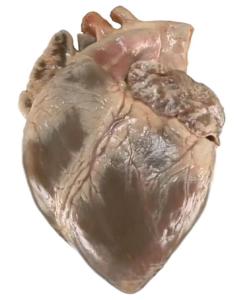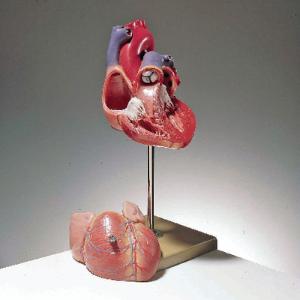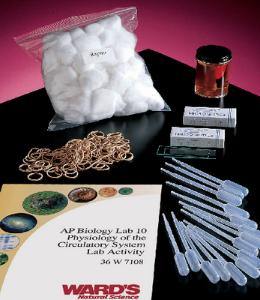Teach heart science without missing a beat!
High School
"How could you describe this heart in words without filling a whole book?" Leonardo da Vinci
Well, we can’t write a book, so we’ll have to get right to the heart of the matter in this post.
At special times throughout the year, love goes off the ch-hearts. Hearts start fluttering and flip-flopping, people start realizing, ‘Oh, wow! My heart is telling me, I’m in love!’ But as Tina Turner put it, “What’s love got to do with it?” Being in love can elicit the same fight-or-flight hormone (adrenaline) that increases the heart rate and blood pressure. Not to mention, the brain starts grumbling, “What am I, chopped liver? TRUE love starts with me!”
Your lesson plans about the human heart can help students sort out the facts scientifically before getting into a battle of the organs.
What causes heart sounds
Using a stethoscope, students can hear the familiar lub-DUB, lub-DUB, lub-DUB* of the human heart. A healthy heart valve makes these "lub" and "DUB" sounds as it opens and closes.
This two-part pumping action (aka a heartbeat) is comprised of these phases:
- Diastole phase - the ventricles relax and fill with blood
- Systole phase - the ventricles contract to pump out blood
Blood collects in the upper chambers (the right and left atria) during the diastole phase. Then, the heart’s natural pacemaker (the sinoatrial or SA node) sends out an electrical signal that causes the atria to contract. This contraction pushes blood through the tricuspid and mitral valves into the resting lower chambers (the right and left ventricles). 1
Once the ventricles are full of blood, the systole phase begins. During this phase, the electrical signals from the SA node travel along a pathway of cells to the ventricles, causing them to contract. As the tricuspid and mitral valves shut tight to prevent a backflow of blood, the pulmonary and aortic valves are pushed open. While blood is pushed from the right ventricle into the lungs to pick up oxygen, oxygen-rich blood flows from the left ventricle to the heart and other parts of the body.1
After blood moves into the pulmonary artery and the aorta, the ventricles relax, and the pulmonary and aortic valves close. The lower pressure in the ventricles causes the tricuspid and mitral valves to open, and the cycle begins again. This series of contractions repeatedly continues, increasing during times of exertion (or being in the same room with your crush) and decreasing while you are at rest (or your crush leaving the room).
The heart doesn’t work alone, though. The brain tracks our surrounding conditions like stress, physical activity, even whether our crush is in the room—and adjusts our cardiovascular system accordingly.
The students in your class will be fascinated learning about the heart’s central role in the circulatory system. The heart holds the key to delivering the oxygen and nutrient-rich blood that all body organs need to stay healthy and work properly. So when anyone asks the students in your class why our hearts make that thump-thump sound, especially when love is in the air, they won’t miss a beat when responding.
*For centuries, humans have debated whether to describe the heart sound as lub-DUB, pum-PUM, thump-thump or boom-BOOM. But, of course, the lighthearted among us will be ok with any of these descriptions.
1. Heartbeat | Texas Heart Institute.
Recommended Products
[StartProductBlock]

Ward's® Fresh, Non-Preserved Pig Heart
Dissect authentically, like cardiologists, and medical industry professionals do today.
[EndProductBlock]
[StartProductBlock]

Somso Heart Model
Life size heart model is an accurate representation of the human heart.
[EndProductBlock]
[StartProductBlock]

Ward's® Physiology of the Circulatory System Lab Activity
Measure blood pressure, pulse, and heart rate, and assess the effects of physiological conditions on their rates in this practical, comprehensive activity.
[EndProductBlock]
